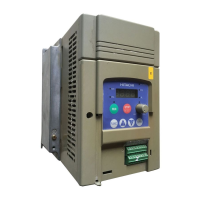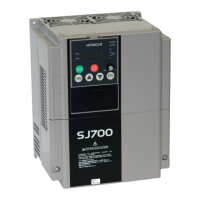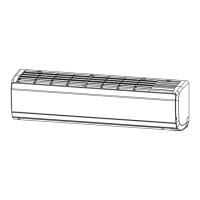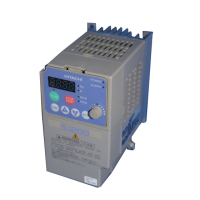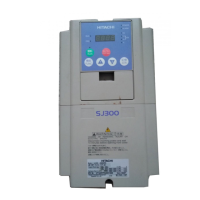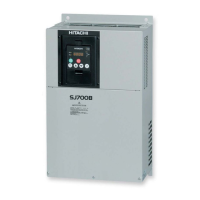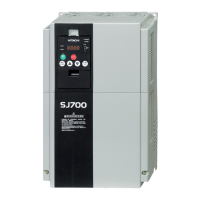23
Analog Input Configuration
The following tables show the parameter settings required for vari-
ous analog input signal types.
Analog Output Function Listing
The following table shows all three functions available for assign-
ment to the analog output terminal:
• Terminal [FM], option set by C_23
Auto-tuning Procedure
The SJ100 auto-tuning feature calibrates the inverter to the parame-
ters of a specific motor such as winding resistance and reactance.
For optimum sensorless vector control, it is important to auto-tune
during the initial installation, and after replacing either the motor or
the inverter.
Auto-tuning requires that you configure the inverter for SLV control
(set A_44 = 02). Then you can perform the auto-tuning procedure,
which is detailed in the SJ100 Inverter Instruction Manual.
[AT] External Frequency Command Input
OFF [O] — [L]
ON [OI] — [L]
(not assigned to any input
terminal)
Summation of [O] — [L] and [OI] — [L]
Option
Code
Function
Name
Description
Corresponding
Signal Range
00 Output
frequency
Actual motor speed,
represented by PWM
signal
0 to max. freq. in Hz
01 Output
current
Motor current (% of
maximum rated output
current), represented by
PWM signal
0 to 200%
02 Digital output
frequency
Output frequency 0 to max. freq. in Hz
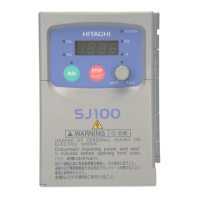
